How Long Does It Take For A New Beehive To Produce Honey?
As a new beekeeper its perfectly natural to look forward to your first harvest of honey. But its probably best to temper your excitement with realistic expectations of how much honey a new colony can produce.
It will take a new beehive a minimum of 4 months to produce honey. A new colony may be producing an excess of honey within 4 months, but not necessarily enough for you to harvest. Practically speaking, your unlikely to harvest any honey from a new colony until its second season.
Harvesting your first production of honey is extremely exciting and fulfilling experience. Let us explore the many factors that can either hinder or expediate your first harvest.
How Long Does It Take For A New Colony To Make Honey
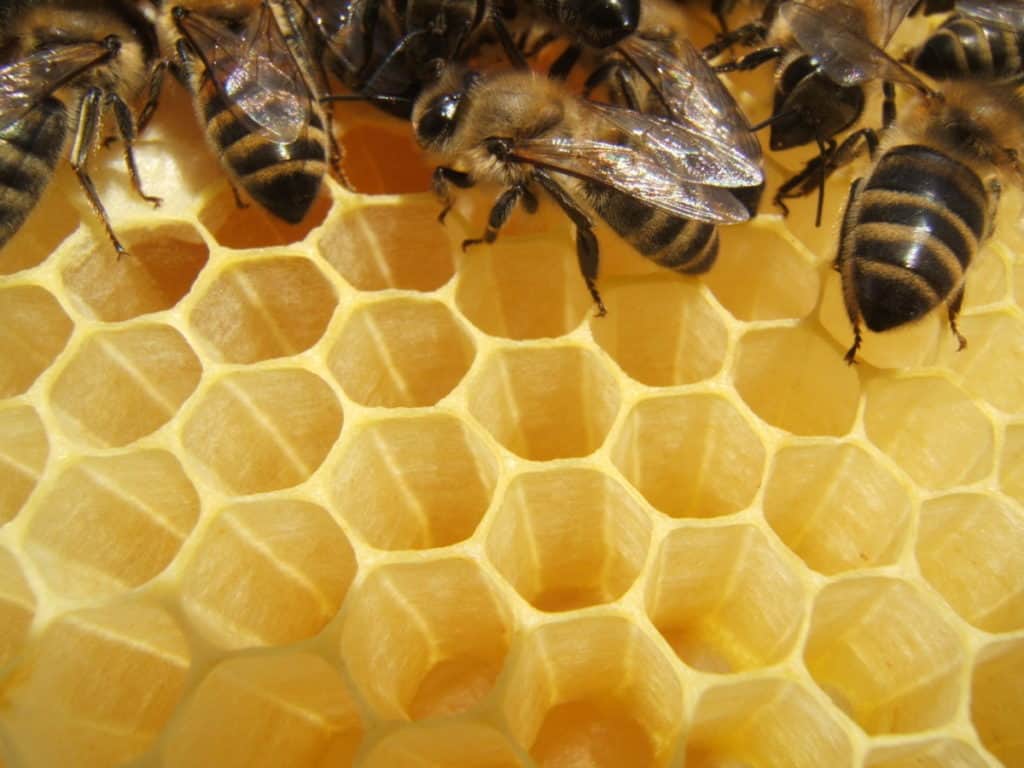
The first year of any bee colony is all about setting up the hive and getting established. The success of this colony is very dependent on how hard you try to understand beekeeping and how much you plan and prepare for your new hive.
There is a wide variety of well written and respected beekeeping books available and free online beekeeping training. I would recommend finding and attending a beekeeping class with a local beekeeper. This will give you a better chance of success and more realistic expectations as you delve into the wonderful world of beekeeping.
It is unlikely that you will harvest any honey your first season of beekeeping. Although, some new beekeepers with perfect conditions and a bit of luck can harvest some honey their first season, albeit rare. It will take a new beehive around 4 months to produce honey but not necessarily enough to be harvested.
A new colony requires a lot of energy and food to draw out the wax and produce comb. Comb is required for the queen to lay new brood, store pollen, and to store nectar. The quicker your colony can become established the quicker it can produce honey.
I would recommend you build up at least double deep boxes (or supers) for the bee colonies brood nest. This will give you two good strong boxes of brood and honey. Once your bee colony has built up this much population, brood, and stores, they will be strong enough for honey boxes to be added to the top.
But this takes time for your bees to build and is the primary reason why it is rare to harvest honey your first season.
And for stronger colonies , hold up for just a bit, I wrote an article all about how long it takes bees to fill a honey super that I encourage you to read.
How Long Does It Take To Establish A New Beehive

A new colony of bees requires at least 3-5 months to become strong and well established. Basically, it will take one season for a new colony to become established. But, just like everything else in beekeeping, there is wide range of factors to consider. I have outlined the most important ones below:
Local Climate – up north its exceedingly difficult to harvest on the first year since the season is much shorter than our southern partners.
Size of bee box – it will take longer to build up a colony of bees on a 10-frame deep box rather than a super, since the deep box is much bigger.
Type of Frames – you can make it easier for you bees by providing frames with plastic foundation and wax. If you use only foundation less frames your bees are going to have to draw out the full foundation and build comb.
Supplemental feeding – you should feed your new colony. A steady supply of sugar syrup will make it easier for the bees to build comb for food storage, egg laying and brood rearing. This can also prepare your bees for the nectar flow if done early enough.
Forage availability – the more forage available for your bees the quicker they can build a strong colony. Knowing your local nectar flows will increase your colonies chance for success. The longer the nectar flow the better.
Local bee colonies – this not only affects how much local forage is available but also any robbing that might occur. New colonies are weak and can easily become victim to robbing from other more stronger bee colonies.
Treatment for mites – depending on where you get your bees it is best to treat your new bees for mites within 1-2 weeks after introducing them into a new hive.
Weather – lots of sunny and warm days will really help a new colony establish itself. You do not have much control over this other than where you place your hives.
How you purchased bees – did you buy a package of bees with queen, a nucleus box of bees with locked in queen, a hive with a big bee colony from another beekeeper or is it a captured swarm? For packaged bees, 5 frame nucs, and swarms, it usually takes one season to get the colony established.
There is a widely know saying among beekeepers about swarms: “a swarm in May is worth a load of hay, a swarm in June is a silver spoon but a swarm in July let them fly”.
If you purchased a hive with a large bee colony then you will just have to prepare for the honey flow and are likely to harvest honey your first season. But this not what most new beekeepers will do.
When you purchased bees – the earlier into the season the better. This gives your bees more time to establish a strong colony.
The strength of the queen bee – the stronger the queen the better. But when you purchase packages of bees you do not necessarily get the strongest queens.
If your new to beekeeping I would recommend starting with at least 3 hives. A lot of things can happen, and you will lose bees. This way you have a better chance of success with at least one or two of your colonies.
I also recommend to always feed your new colonies. This will give your bees the best chance to get established early on.
How Much And For How Long Should You Feed A New Beehive
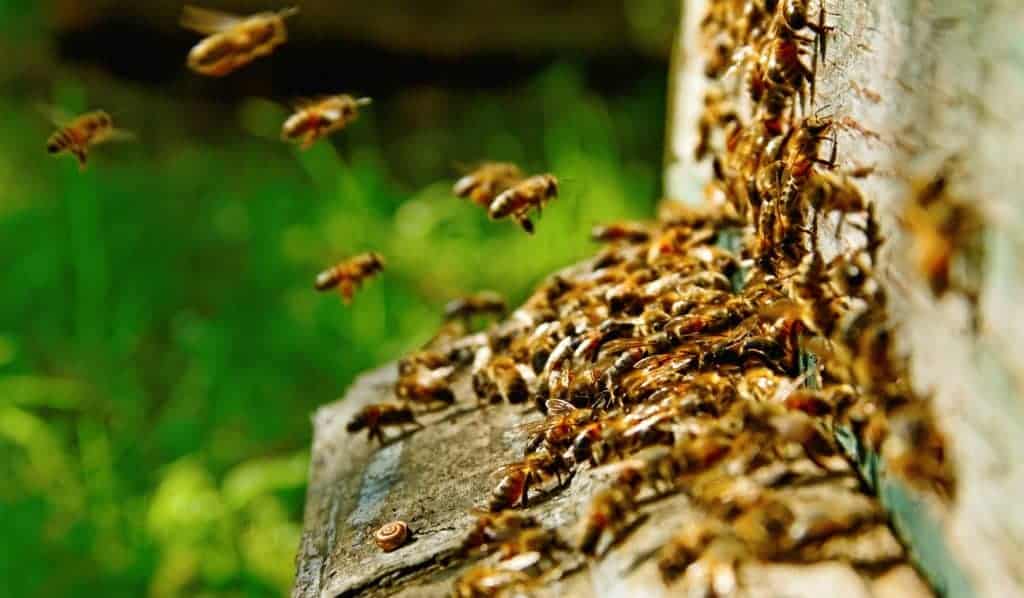
The amount you feed a new colony and for how long is a common question among new beekeepers and experienced alike. One thing that most beekeepers all agree on though is that you must feed any new colony of bees and especially if you purchased them.
Here are several common methods of feeding experienced beekeepers follow:
- Feed syrup until the bees have 5 to 6 full drawn frames then let the bees take over by foraging.
- Continue feeding syrup until the colony has 2 full boxes of drawn comb
- Continue to feed for the entire first season
- Continue to feed the colony until they have used 5 gallons of syrup per purchased package of bees. Best to inspect for drawn frames though as well.
- Lastly, continue to feed until the bees stop eating the syrup. This is not always the best option since some bees will continue to feed on syrup even through a strong nectar flow.
Regarding overwintered bees, they do not normally require a lot of syrup or feeding in the spring. But most beekeepers, especially commercial operations, will feed syrup in the spring to help get the brood-rearing process kick started. Also, depending on your climate, there is not a lot of forage available in the spring.
Now, if your going to feed with your own mix of water and sugar, make sure to only use white refined sugar. Other types of sugars and sweeteners, including brown sugar, maple syrup and cane juice, have too many solid particles in them and can cause bee dysentery.
Also, never feed syrup with a honey super and queen excluder in place, your bees will store the syrup right in with the nectar and you will not get pure honey.
How Long Does It Take Bees To Make Honeycomb
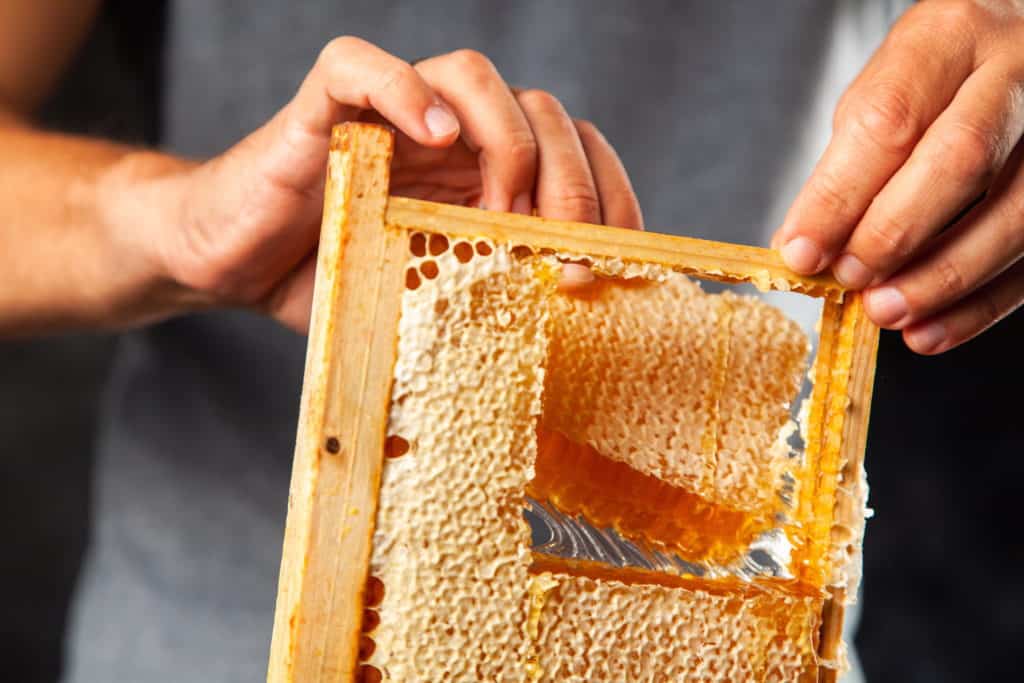
On average it will take between 7 days to 2 months for bees to produce comb and fill it with honey. But a strong established colony, during a strong honey flow, can draw out a full 10 frame deep box and fill it with honey in as little as 3 days. Sometimes even quicker, in less than 24 hours.
The time it takes to build comb will depend on the size of the honeycomb, the size of the bee population, and the amount of nectar brought into the colony. Other factors are whether the bees were given starter frames and if it is a new or established colony. Also, the more you feed your new colonies the quicker they will build comb become a strong colony
Bees require a large amount of nectar to produce comb and will also fill them quickly. It takes around 40 pounds of nectar for bees to make 1 comb weighting 1lb. This is before they even begin to fill the cells with nectar, or honey.
Since wax is the basis for honeycomb, bees will consume around 6-8 pounds of honey to produce only 1 pound of wax. Also, they require around 5 pounds of nectar to produce 1 pound of honey.
I go into a deep dive regarding the producing, harvesting and selling of honeycomb in these two articles I wrote about how long it takes for bees to make honeycomb and how much money you can make selling honeycomb that I recommend you read.
How Long Does It Take For Nectar To Turn Into Honey
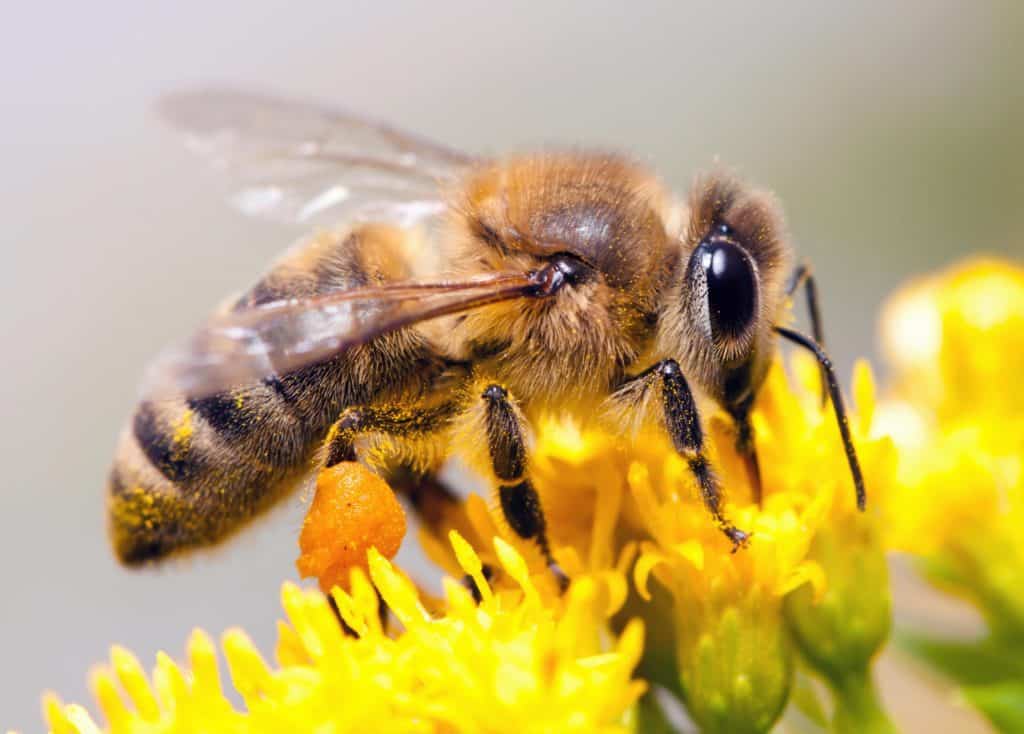
It usually only takes a couple of days from collecting nectar to producing capped honey, especially during a heavy honey flow. It is quite the process and for some it will seem disgusting and gross. Bees collect the nectar, mix it with enzymes in their honey stomachs, and regurgitate it into the comb cells. The process of breaking down nectar by enzymes is called inversion.
If you have heard honey being referred to as bee vomit, now you know why.
Forager bees leave the hive and collect the nectar. They return and regurgitate the nectar to the younger house bees. The house bee ingests the nectar and the house bee’s enzymes also work on breaking down the nectar. The nectar gets passed from house bee to house bee until the water content is reduced to approximately 20% to 23%.
The last house bee will regurgitate the inverted nectar into a cell. The bees will fan it nearly constantly to draw out the water content and get it down to 18 percent moisture level before capping it with wax. To fill a forager bees honey stomach, she will have to collect nectar from 50 to 100 flowers.
I know, the process sounds gross. Who knows how many times that honey your eating has been regurgitated by forager and house bees.
What Months Do Bees Make Honey
The best months for honey production are most commonly between June and August. But, surprise, surprise, it depends. Again, this will depend on your local climate. For instance, in Washington bee colonies will produce honey from June until August but in Colorado bees will make honey from April to October.
While in some southern area’s bees will produce honey from March until November and only stop during the winter. Basically, if its warm enough at night and there are available nectar sources, bees will make honey.
Of course, it also dependent on your local nectar flows and what months of the spring and summer these are the strongest. Generally, you will have a strong spring flow and a short fall flow. As with everything in beekeeping, it always best to speak with local beekeepers and/or local associations to find out when the nectar will be flowing and for how long.
Also, bees do not produce honey in the winter, they rely on their honey stores to survive the winter and stay warm.
How Much Honey Can An Established Hive Make In A Season
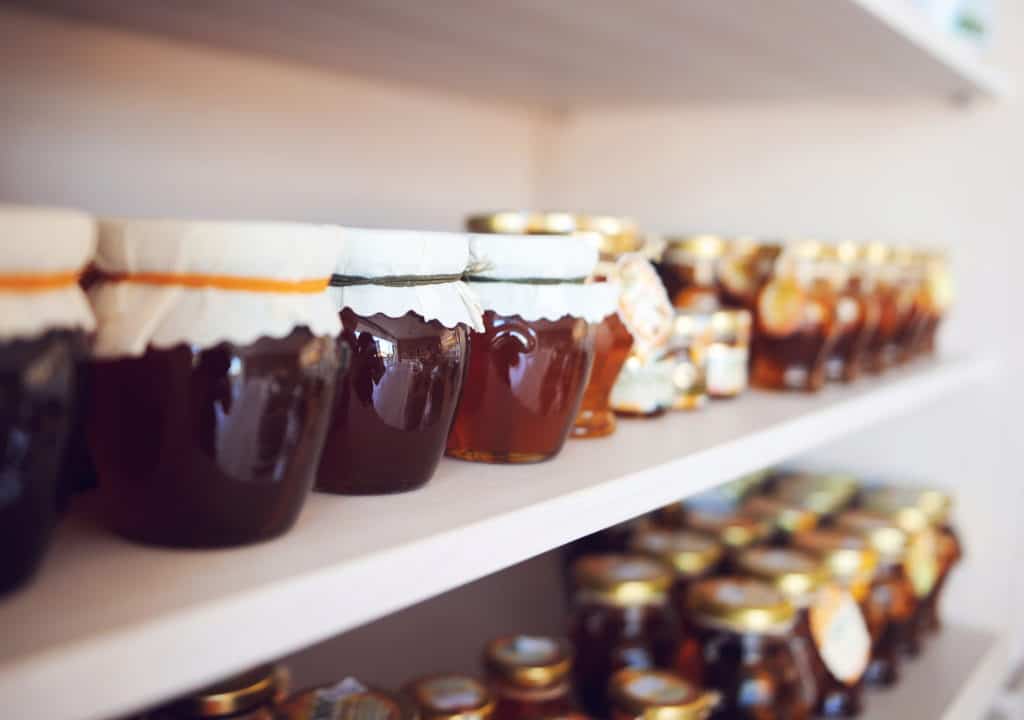
The amount of honey produced by a single hive is dependent on the strength of the colony and type of hive box used.
With a traditional 10 frame deep box a strong hive will produce 80 to 100 lbs of honey. A super or medium box is likely to produce 40 to 60 lbs of honey since its smaller than a deep box. Of course, this dependent on how good your honey flow is for that particular year, weather conditions, beehive robbing, and temperature.
The amount of honey harvested is also dependent on how established the hive is. New colonies will not produce much harvestable honey. They take a year to really grow a stable population to produce large amounts of honey. Also, do not forget your bees will need honey to get them through the winter.
And to get a better idea of the timeframes involved when producing your honey and the potential income from selling your honey, check out these articles I wrote all about how long it takes for honeybees to make honey and how much money you can make selling honey.
But, how many actual jars of honey does 10 lbs or even 50 lbs of honey produce? I have included a chart below illustrating the average number of 8 oz. or 10 oz. jars you can expect to fill depending on how many pounds of honey you have harvested.
| Pounds | Ounces | 8 oz Jars | 10 oz Jars |
| 10 | 107 | 13 | 10 |
| 20 | 214 | 26 | 21 |
| 30 | 321 | 40 | 32 |
| 40 | 428 | 53 | 42 |
| 50 | 535 | 66 | 53 |
| 60 | 642 | 80 | 64 |
| 70 | 749 | 93 | 75 |
| 80 | 856 | 107 | 85 |
| 90 | 963 | 120 | 96 |
| 100 | 1070 | 133 | 107 |
How Many Times Can You Harvest Honey In A Year
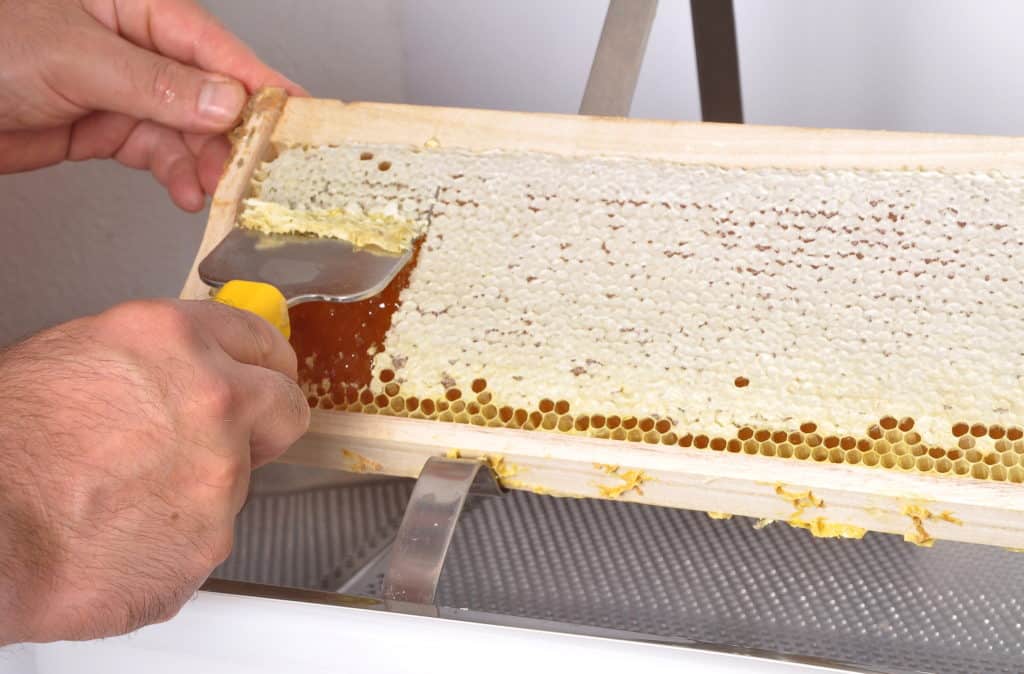
Most beekeepers harvest honey 2 times per year/season. Honey is normally harvested between mid June until mid September. How often you harvest depends on your local climate and plant life. Poor weather conditions, disease and pests infiltrating your hives will also affect your harvesting schedule.
Knowing your best window of time for harvesting is particularly important and will mean the difference between gathering great tasting honey or honey that could spoil. Like anything in beekeeping, the number of times you can harvest honey in a year varies by your region and weather conditions.
You do not want to harvest too early because you will not capitalize on the full amount of honey available. But you do not want to harvest to late because your risking running into cold weather and taking too much honey without leaving enough for the colony to survive the winter.
You also need to carefully time any chemical treatment you administer your bees for mites and such. When you treat your bees cannot overlap during the honey flow.
If its your first year of beekeeping with a new colony you will not likely be able to harvest much honey if any at all. A new honeybee colony needs a full season to build up a large enough population to gather surplus honey.
Beekeepers who harvest honey 3 times a year will usually label it as varietal honey. The label will also include when it was harvested and from what plant life or vegetation.
When the nectar flow is strong, beekeepers will add supers to the hives in rapid succession allowing the bees to store as much as the flow will allow. When a super is added on to the hive do not forget to include a queen excluder, you don’t want the queen laying in the frames meant for honey.
And for more detailed information about harvesting your honey check out this article I wrote all about how many times you can harvest honey in a year.
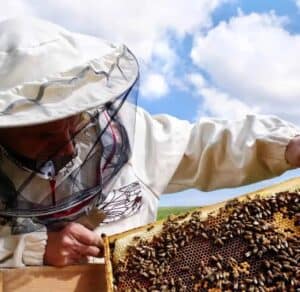
Joseph Davis
My goal is to show that anyone can take up beekeeping and it can be a very rewarding hobby. I strive to share my experiences and answer any questions you may have.
